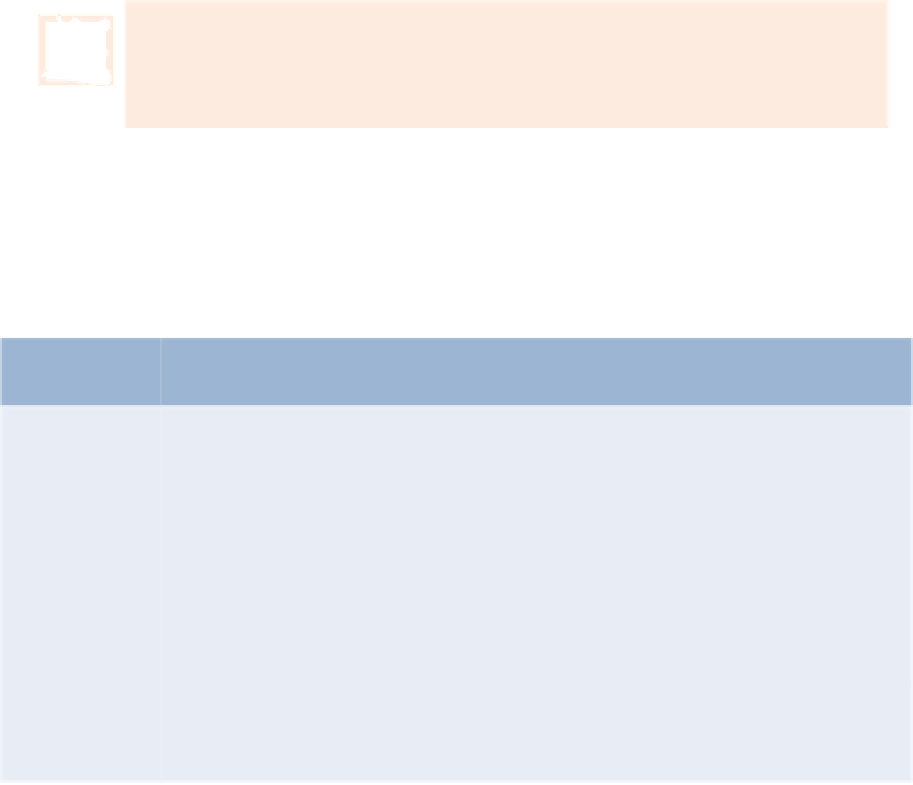Java Reference
In-Depth Information
As we explained, instantiating a subclass object begins a chain of constructor calls in which
the subclass constructor, before performing its own tasks, explicitly uses
super
to call one of
the constructors in its direct superclass or implicitly calls the superclass's default or no-argu-
ment constructor. Similarly, if the superclass is derived from another class—true of every
class except
Object
—the superclass constructor invokes the constructor of the next class up
the hierarchy, and so on. The last constructor called in the chain is
always
Object
's construc-
tor. The original subclass constructor's body finishes executing
last
. Each superclass's con-
structor manipulates the superclass instance variables that the subclass object inherits. For
example, consider again the
CommissionEmployee
-
BasePlusCommissionEmployee
hierar-
chy from Figs. 9.10-9.11. When an app creates a
BasePlusCommissionEmployee
object, its
constructor is called. That constructor calls
CommissionEmployee
's constructor, which in
turn calls
Object
's constructor. Class
Object
's constructor has an
empty body
, so it immedi-
ately returns control to
CommissionEmployee
's constructor, which then initializes the
CommissionEmployee
instance variables that are part of the
BasePlusCommissionEmployee
object. When
CommissionEmployee
's constructor completes execution, it returns control to
BasePlusCommissionEmployee
's constructor, which initializes the
baseSalary
.
Software Engineering Observation 9.9
Java ensures that even if a constructor does not assign a value to an instance variable, the
variable is still initialized to its default value (e.g.,
0
for primitive numeric types,
false
for
boolean
s,
null
for references).
As we discussed earlier in this chapter, all classes in Java inherit directly or indirectly from
class
Object
(package
java.lang
), so its 11 methods (some are overloaded) are inherited
by all other classes. Figure 9.12 summarizes
Object
's methods. We discuss several
Object
methods throughout this topic (as indicated in Fig. 9.12).
Method
Description
equals
This method compares two objects for equality and returns
true
if they're equal
and
false
otherwise. The method takes any
Object
as an argument. When objects
of a particular class must be compared for equality, the class should override
method
equals
to compare the
contents
of the two objects. For the requirements of
implementing this method (which include also overriding method
hashCode
), refer
to the method's documentation at
docs.oracle.com/javase/7/docs/api/java/
lang/Object.html#equals(java.lang.Object)
. The default
equals
implementa-
tion uses operator
==
to determine whether two references
refer to the same object
in
memory. Section 14.3.3 demonstrates class
String
's
equals
method and differenti-
ates between comparing
String
objects with
==
and with
equals
.
hashCode
Hashcodes are
int
values used for high-speed storage and retrieval of information
stored in a data structure that's known as a hashtable (see Section 16.11). This
method is also called as part of
Object
's default
toString
method implementation.
Fig. 9.12
|
Object
methods. (Part 1 of 2.)




